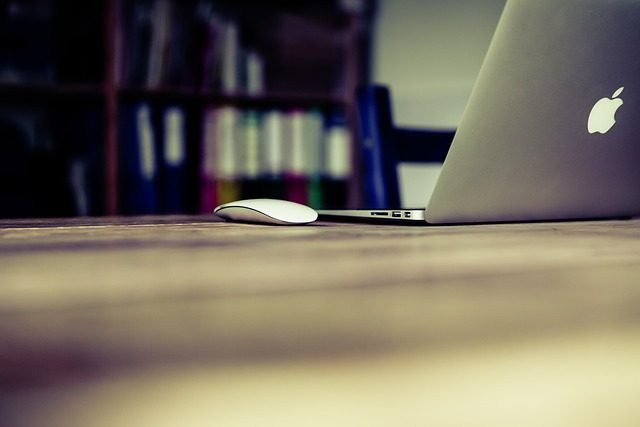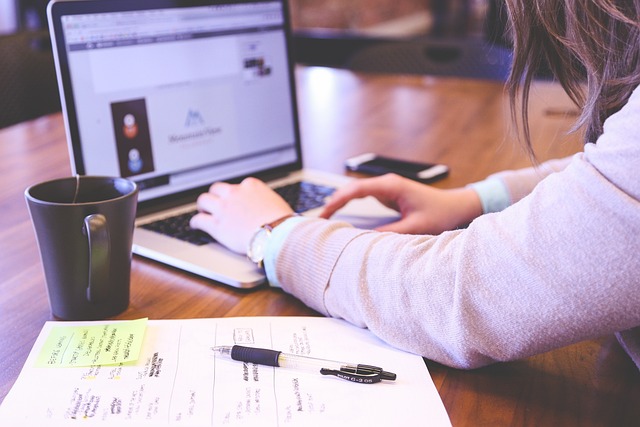Understanding the Need for Balance
In today’s fast-paced world, finding the right balance between creative work and personal time can feel like trying to solve a complex puzzle. Many individuals pour their hearts into their creative pursuits. This dedication often leads to the feeling that there’s no room for anything else. However, it’s essential to recognize that maintaining a harmonious work-life balance is not just a luxury, but a necessity for overall well-being. Balancing creative work with personal time enhances productivity and promotes mental health. Without this balance, burnout may loom around the corner, leading to a decline in both creativity and passion.
Why is work-life balance crucial? It’s simple: when you dedicate all your time to creative tasks, you might end up feeling exhausted and uninspired. Your innovative juices start to dry up, and the spark that once ignited your passion may start to flicker. Engaging in personal time allows your brain to recharge. The subconscious mind continues to process ideas, often leading to breakthroughs precisely when you’re away from your desk. It’s vital to remember that rest is not the enemy of creativity; rather, it nourishes it. Embracing personal time doesn’t detract from creative work—it amplifies it.
The Creative Work Landscape
Creative work encompasses a broad range of activities, from painting and writing to designing and composing. Each of these activities demands not just skill but also emotional investment and energy. Therefore, the creative landscape is diverse, each with its unique challenges and rewards. Creative professionals often face the pressure to constantly produce high-quality work. This pressure can lead to long hours, sleepless nights, and a daily routine dominated by deadlines. When does passion become a chore? This question becomes paramount when passion projects turn into stressors.
Let’s not forget the nature of creativity itself. It often thrives in an environment of inspiration and freedom. Yet, when creative minds feel trapped in a routine, their output may stagnate. It’s essential to create opportunities for spontaneity and inspiration. Engaging in personal activities not only diversifies your experiences but also fuels your creative ideas. Activities that seem unrelated might give birth to unique perspectives in your work. Bringing a range of experiences into your creative workflow can really refresh your approach. This leads us to the question: how do you build that bridge between creative work and personal time?
Setting Boundaries
One critical step in balancing creative work with personal time involves setting clear boundaries. Boundaries help you delineate between work hours and personal hours, enabling your mind to switch gears effectively. Think about how you can structure your day to incorporate dedicated time for both work and relaxation. This doesn’t mean you need a strict schedule. Instead, aim for a flexible routine where you can allocate specific times for creative projects. But, equally important, designate times for personal activities that energize you.
Moreover, consider your workspace. Creating a dedicated area for creative work can help you mentally separate it from your personal life. When you finish your creative tasks for the day, leaving that space can signal to your mind that it’s time to take a break. You might find it beneficial to engage in activities that contrast with your creative work, such as exercise or reading. These activities can provide a comprehensive mental reset. The beauty of setting boundaries lies in their adaptability; if one approach doesn’t work, you can always pivot to find another solution that suits your lifestyle more effectively.
Scheduling Personal Time
When you’re committed to balancing creative work and personal time, scheduling becomes a vital tool. Just as you reserve time for client meetings or project deadlines, treat your personal time with equal respect. Schedule time for activities that you enjoy or that simply allow you to unwind. Whether it’s hitting the gym, going for a walk, or spending time with loved ones, treat these appointments as non-negotiable commitments.
It might feel strange at first to carve out personal time in your calendar. However, think of it as an investment in your well-being. Some people even find it helpful to incorporate personal time into their morning routine. Waking up early to engage in a hobby can set a positive tone for the day. Even small moments of enjoyment can significantly impact your mood and level of productivity. Remember, unstructured personal time is just as valuable as scheduled activities; both help in reducing mental fatigue and may even spark new ideas for your creative projects.
Practicing Mindfulness
Mindfulness can play a transformative role in achieving that delicate work-life balance. Practicing mindfulness involves being fully present in each moment, whether working on a creative task or enjoying personal activities. By focusing your attention on the task at hand, you can enhance your creativity while simultaneously enjoying your downtime. Mindful practices, such as meditation or deep breathing exercises, can ground you, providing clarity that fuels both productivity and relaxation.
Moreover, mindfulness helps you become aware of your feelings and thoughts. When you detect signs of stress or burnout, acknowledge those feelings rather than push them aside. Give yourself permission to step back and recharge. You might find that even just a 10-minute mindfulness exercise can refresh your perspective and reignite your creativity. Engaging in nature, practicing yoga, or exploring artistic meditative activities can also help anchor you in the present and afford you the benefits of mindfulness, enhancing your overall life quality.
Leveraging Downtime for Creativity
While it may seem counterintuitive, embracing downtime can often unlock your creative potential. When you step back from the grind, your brain has the chance to wander. It’s during these leisurely moments that inspiration often strikes—whether it’s while enjoying a relaxing bath, cooking a meal, or simply sitting with a cup of tea. Rather than viewing downtime as unproductive, see it as essential to the creative process.
Taking breaks allows your mind to process and connect different ideas, resulting in “aha!” moments. Think about your favorite songs, books, or creative pieces. Many times, those concepts were born in moments of solitude or relaxation. Integrating mindful activities into your downtime can heighten this effect. Journaling, sketching ideas, or even taking walks can serve as outlets for unexpressed emotions or unresolved challenges. So, rather than feeling guilty for taking time away from work, embrace it as a step toward rich, creative output.
Building a Support Network
Next, let’s delve into the importance of having a solid support network when it comes to balancing creative work and personal time. Surrounding yourself with people who understand your creative endeavors can provide the encouragement and motivation you need. This network might include fellow artists, mentors, or even friends and family who share your interests. They can offer accountability, helping you stick to your personal time commitments while balancing your creative workload.
Moreover, sharing your experiences with others creates a sense of community. You might find that peers struggle with similar challenges. Opening discussions about work-life balance in creative professions can lead to valuable strategies. You may discover new insights or tips that help streamline your workflow. Engaging in creative networks—whether through online forums, local meet-ups, or workshops—can also provide an additional source of inspiration. The collaborative spirit often found in these environments fosters growth and creativity while reinforcing the importance of personal time away from work.
Embracing Imperfection
Perfectionism often creeps into the lives of creative individuals. You may feel the need to produce flawless work, which can lead to stress and hinder your ability to enjoy personal time. It’s essential to understand that perfection isn’t a realistic goal. Embracing imperfection allows you to relieve the pressure you place on yourself. Acknowledging that some projects will unfold beautifully while others may not can liberate your creativity from self-imposed constraints.
Additionally, letting go of the chase for perfection can open up the space for experimentation. Give yourself permission to create without the fear of judgment. When personal time aligns with creative failure, it can lead to new experiments and innovative projects. In the realm of creative work, every misstep can be a valuable learning opportunity. Celebrate the learning process, and remember that each attempt—whether successful or not—contributes to your growth as a creative individual. Learning to appreciate the beauty of imperfection fosters resilience and nurtures a healthy work-life balance.
Conclusion: Cultivating a Lifelong Practice
Ultimately, achieving a harmonious balance between creative work and personal time takes mindful effort and practice. Consider it an ongoing journey rather than a destination. Some days, you’ll feel on top of your personal time; other days, creative demands might take precedence. Accepting that this will ebb and flow can foster a healthier perspective toward both your work and your personal life.
Keeping communication open with yourself and those around you sets a healthy precedent. Regularly evaluate how you’re feeling in terms of creativity and personal satisfaction. Adjusting the approach as necessary allows for continual growth and adaptation in both realms. With time, you’ll surely find paths that resonate with your personal style and preference, resulting in a fulfilling balance between your creative endeavors and personal pursuits.
FAQs
- What are some signs I need to reevaluate my work-life balance?
- Common signs include persistent feelings of burnout, lack of motivation, irritability, and diminishing creativity. If you feel drained and unable to enjoy personal time, it’s time to reassess.
- How can I effectively set boundaries between work and personal time?
- Create a structured schedule that clearly identifies work hours and personal activities. Additionally, establish a dedicated workspace that helps signal the switch between work and relaxation.
- What role does physical activity play in balancing work and personal time?
- Physical activity boosts mental clarity and reduces stress. Incorporating regular exercise into your routine can enhance your productivity and creativity, allowing you to approach your work more refreshingly.
- Are there any specific mindfulness techniques I can incorporate?
- Yes! Techniques such as deep breathing exercises, meditation, and mindful walking can all help ground you and foster awareness in both your creative and personal endeavors.
- How can personal activities enhance my creative work?
- Engaging in personal activities allows your brain to process ideas unconsciously, leading to new insights. Diverse experiences can inspire fresh perspectives, enriching your creative output.



